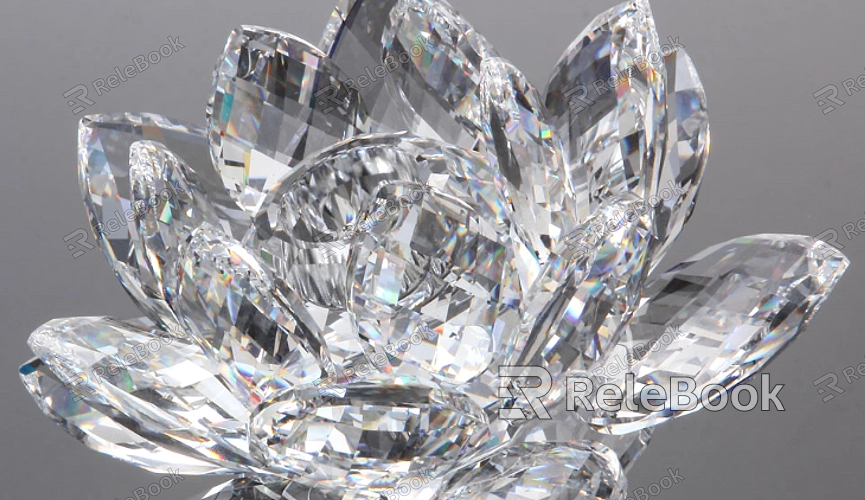How to Make 3D Textures for Blender
Creating 3D textures is an essential part of any 3D design workflow, whether you're working in game development, animation, or architectural visualization. Textures not only add detail and realism to models but also play a significant role in determining the overall visual impact of a scene. As a 3D modeling designer, I frequently create textures in Blender, thanks to its powerful tools and flexibility, making the process both efficient and creative. From basic texture painting to fine-tuning intricate details, this article will cover the key steps and techniques for creating 3D textures in Blender, helping you improve your texture creation process and ensuring each detail meets your expectations.

Setting Up UV Unwrapping
UV unwrapping is the process of unfolding a 3D model's surface into a 2D plane, allowing textures to be accurately mapped onto the model. Proper UV unwrapping not only prevents texture distortion but also ensures that textures are evenly distributed across different surface areas.
Even Unwrapping: Ensure that all UV islands are proportionate, avoiding stretching or distortion when applying textures.
Efficient Segmentation: Depending on the complexity of the model, break it down into multiple UV sections, allowing enough space for each texture.
Seam Management: Carefully place seams to avoid noticeable texture seam artifacts in the final render. Blender provides both automatic and manual UV unwrapping tools to choose the best method based on your model's shape.
By properly unwrapping the UVs, you lay a solid foundation for the texture to fit naturally on the model's surface, setting up the next steps in texture creation.
Painting Textures Using Blender’s Built-In Tools
Blender offers a range of texture painting tools that enable designers to paint directly onto the 3D model, making the process more intuitive.
Texture Canvas: In Blender's Texture Paint mode, you can paint textures directly on the 3D model’s surface, viewing the changes in real-time. This allows for quick adjustments to color, detail, and glossiness.
Brushes and Materials: Blender includes a variety of brush tools to create different types of textures, such as rough, smooth, or worn effects. You can also create custom materials to add more layers and richness to the texture.
Real-Time Preview: By enabling Viewport Shading, you can instantly preview the effect of your textures under various lighting conditions. This helps you fine-tune your work and avoid unwanted results.
Blender's real-time painting and flexible brush system make the texturing process more efficient and accurate.
Using External Tools for Texture Optimization
Although Blender's built-in painting tools are powerful, external software like Photoshop is still essential for refining specific details and optimizing textures for final rendering.
Detail Refinement: In Photoshop, you can fine-tune the texture's color, brightness, and contrast to ensure it meets rendering needs. Adjusting hue and highlights will help the texture look more realistic under different lighting conditions.
Adding Wear and Tear: Photoshop's filters and brushes can be used to add additional details such as cracks, dirt, or weathering effects, enhancing the realism of your texture.
File Conversion: After making adjustments, save the texture in formats like .png or .tiff to ensure compatibility with Blender or other 3D software.
Optimizing textures in Photoshop allows for better detail refinement, especially for high-resolution renders where fine details matter most.

Rendering Tests and Optimization
After painting and optimizing the texture, it’s crucial to run rendering tests in Blender to ensure that the textures perform as expected in the final output.
Lighting and Shadow Testing: Apply the texture to the model and conduct rendering tests under various lighting conditions. Observe how the texture behaves in highlights, shadows, and reflections. Adjust normal maps or roughness maps as needed.
Performance Optimization: Depending on the project's needs, adjust the texture’s resolution and size to prevent large files that can slow down rendering. Blender’s rendering settings also allow you to tweak the compression method for textures to improve render times.
Real-Time Render Check: In Viewport Shading, enable the render preview to see how your texture looks in the final render in real-time. This helps ensure the details are correct and prevents any issues from arising during the final render.
These rendering tests not only help you catch any potential problems with how the texture behaves in different environments but also ensure that your model performs well across various platforms and devices.
Combining Multiple Tools for an Optimized Workflow
Sometimes, relying on a single tool isn't enough to meet all the needs of texture creation. Combining various software tools in your workflow can increase both efficiency and quality.
Blender + Substance Painter: You can model and unwrap your UVs in Blender, then use Substance Painter for texture painting. Afterward, bring the results back into Blender for rendering tests. This approach lets you take full advantage of both tools' capabilities.
Blender + Photoshop: After painting textures in Blender, export the file to Photoshop for detailed refinement and format conversion, then re-import it back into Blender for final rendering.
This combined workflow can enhance the efficiency of each stage, ensuring a high-quality final result.
Creating 3D textures involves a meticulous process from UV unwrapping to painting, refining, optimizing, and testing. By carefully choosing the right tools and optimizing your workflow, you can create high-quality textures that will elevate the visual quality of your projects. For more high-quality 3D textures and resources, feel free to visit Relebook, where you'll find a wealth of assets and tools to support your creative projects.

